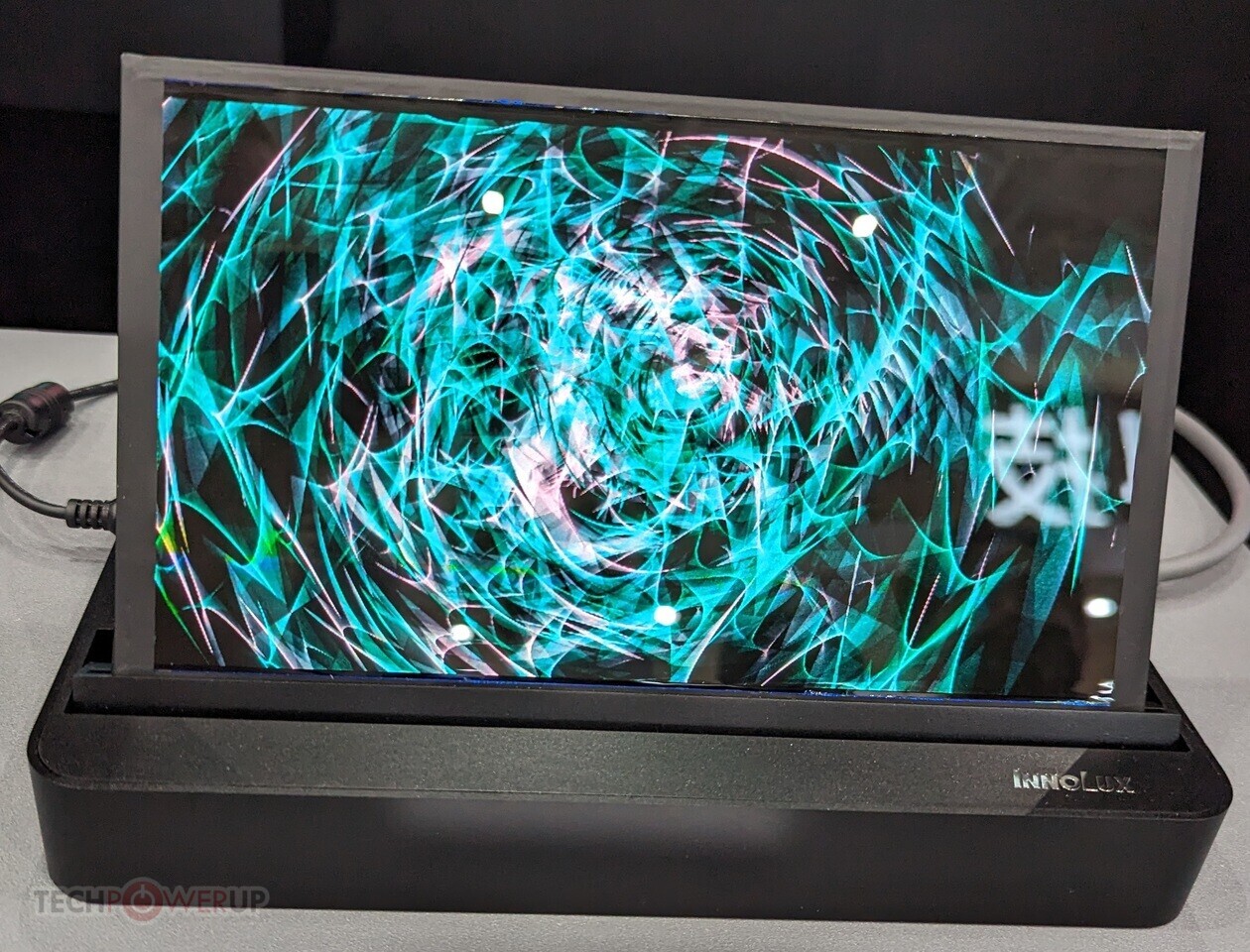TheLostSwede
News Editor
- Joined
- Nov 11, 2004
- Messages
- 18,919 (2.50/day)
- Location
- Sweden
| System Name | Overlord Mk MLI |
|---|---|
| Processor | AMD Ryzen 7 7800X3D |
| Motherboard | Gigabyte X670E Aorus Master |
| Cooling | Noctua NH-D15 SE with offsets |
| Memory | 32GB Team T-Create Expert DDR5 6000 MHz @ CL30-34-34-68 |
| Video Card(s) | Gainward GeForce RTX 4080 Phantom GS |
| Storage | 1TB Solidigm P44 Pro, 2 TB Corsair MP600 Pro, 2TB Kingston KC3000 |
| Display(s) | Acer XV272K LVbmiipruzx 4K@160Hz |
| Case | Fractal Design Torrent Compact |
| Audio Device(s) | Corsair Virtuoso SE |
| Power Supply | be quiet! Pure Power 12 M 850 W |
| Mouse | Logitech G502 Lightspeed |
| Keyboard | Corsair K70 Max |
| Software | Windows 10 Pro |
| Benchmark Scores | https://valid.x86.fr/yfsd9w |
TrendForce's latest research reveals that despite ongoing macroeconomic challenges, both buyers and sellers remain bullish on the OLED monitor panel market. Following a remarkable 132% YoY growth in 2024, this strong momentum is expected to carry over into 2025. As a result, TrendForce has revised its 2025 OLED monitor panel shipment forecast upward from 2.8 million to 3.4 million units—raising the annual growth rate from 40% to 69%.
While the broader panel market is feeling the strain of the U.S.'s reciprocal tariffs, the OLED monitor segment has been relatively insulated and continues to exhibit strong growth. One key driver is the high acceptance of OLED monitors among gaming enthusiasts, encouraging brands to expand their OLED gaming product lines. In parallel, Korean panel makers are increasingly shifting their focus toward OLED monitors.

TrendForce notes that Samsung Display (SDC) and LG Display (LGD) remain the primary suppliers of OLED monitor panels. With growth in the OLED TV panel segment slowing, SDC is pivoting toward OLED monitors as a strategic focus—aiming to scale shipments and maintain high utilization and profitability at its A5 production line.
LGD, previously constrained by losses in its LCD business and hesitant to engage in aggressive price competition with SDC, had initially set a conservative shipment target of under 700,000 units for 2025. However, surging customer demand and limited OLED panel supply have prompted LGD to revise its target to 800,000 units, with the potential to raise it further to 1 million units.
On the demand side, gaming brands such as ASUS and MSI are heavily promoting OLED monitors. At COMPUTEX in May, both companies showcased 27-inch QD-OLED gaming monitors with 500 Hz refresh rates. Their OLED monitor panel demand is expected to double in 2025, with ASUS alone projected to surpass 500,000 units. ASUS is actively marketing both QD-OLED and WOLED monitors, significantly boosting demand for WOLED panels—a key factor in LGD's more aggressive stance on this market segment.
Additionally, China's domestic electronics replacement subsidies are fueling gaming demand, prompting local tier-2 brands to rapidly expand their OLED monitor product lines.
View at TechPowerUp Main Site | Source
While the broader panel market is feeling the strain of the U.S.'s reciprocal tariffs, the OLED monitor segment has been relatively insulated and continues to exhibit strong growth. One key driver is the high acceptance of OLED monitors among gaming enthusiasts, encouraging brands to expand their OLED gaming product lines. In parallel, Korean panel makers are increasingly shifting their focus toward OLED monitors.

TrendForce notes that Samsung Display (SDC) and LG Display (LGD) remain the primary suppliers of OLED monitor panels. With growth in the OLED TV panel segment slowing, SDC is pivoting toward OLED monitors as a strategic focus—aiming to scale shipments and maintain high utilization and profitability at its A5 production line.
LGD, previously constrained by losses in its LCD business and hesitant to engage in aggressive price competition with SDC, had initially set a conservative shipment target of under 700,000 units for 2025. However, surging customer demand and limited OLED panel supply have prompted LGD to revise its target to 800,000 units, with the potential to raise it further to 1 million units.
On the demand side, gaming brands such as ASUS and MSI are heavily promoting OLED monitors. At COMPUTEX in May, both companies showcased 27-inch QD-OLED gaming monitors with 500 Hz refresh rates. Their OLED monitor panel demand is expected to double in 2025, with ASUS alone projected to surpass 500,000 units. ASUS is actively marketing both QD-OLED and WOLED monitors, significantly boosting demand for WOLED panels—a key factor in LGD's more aggressive stance on this market segment.
Additionally, China's domestic electronics replacement subsidies are fueling gaming demand, prompting local tier-2 brands to rapidly expand their OLED monitor product lines.
View at TechPowerUp Main Site | Source






